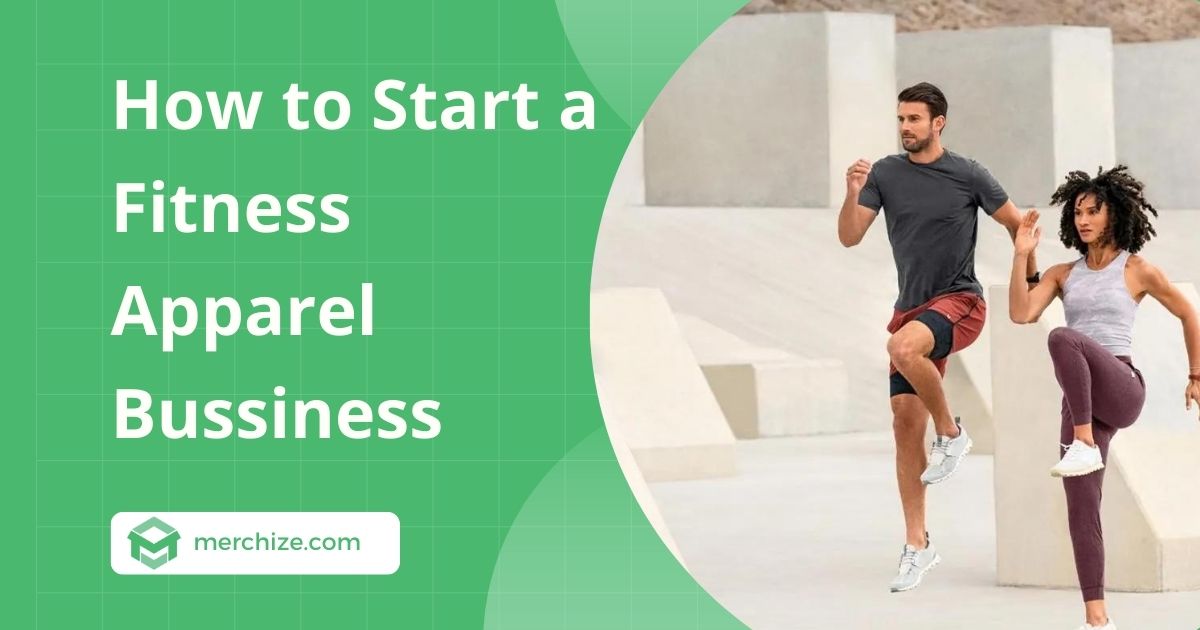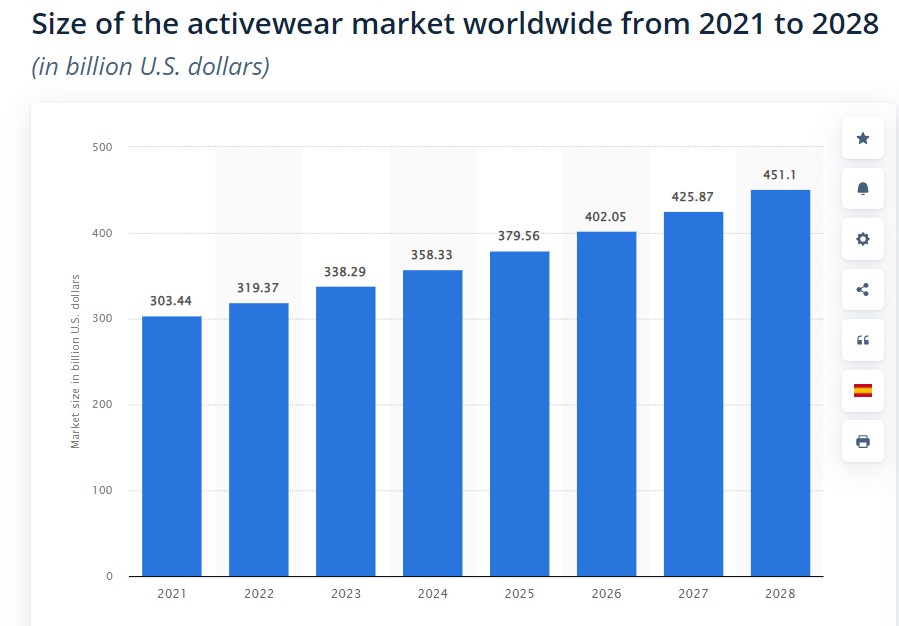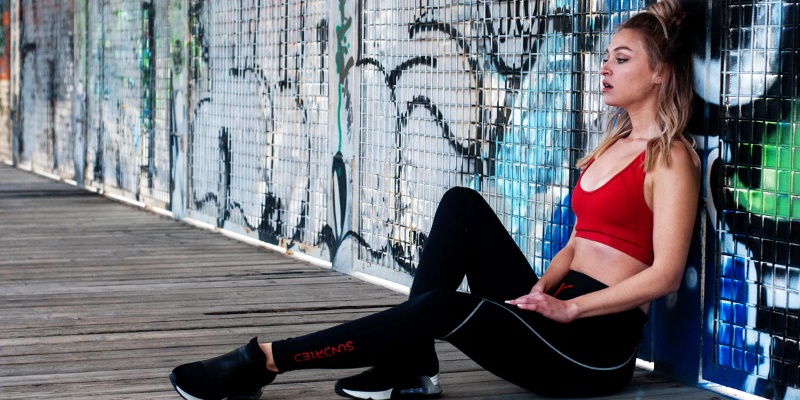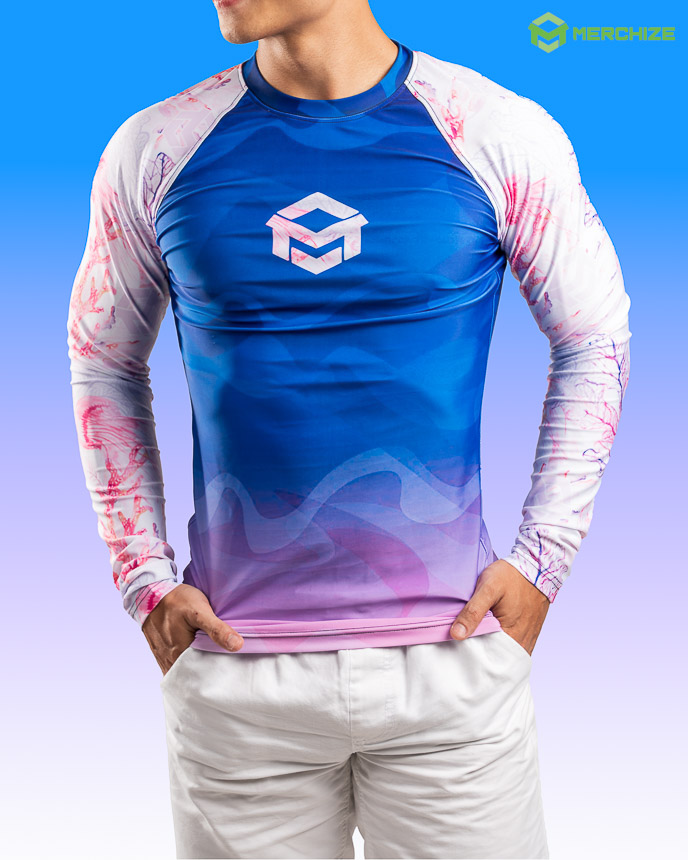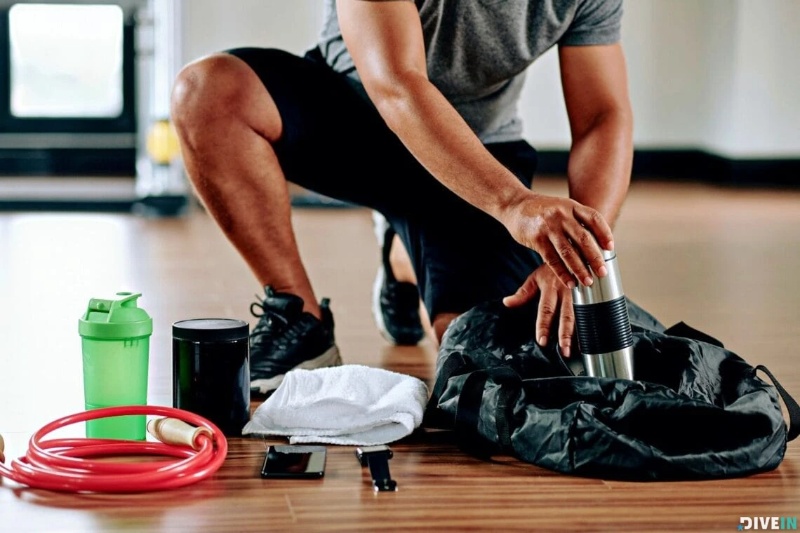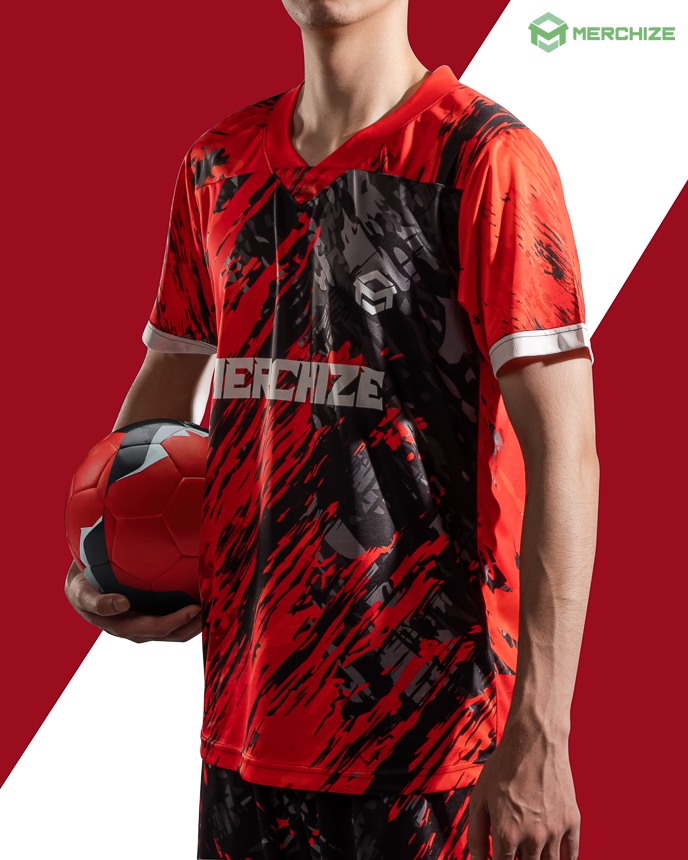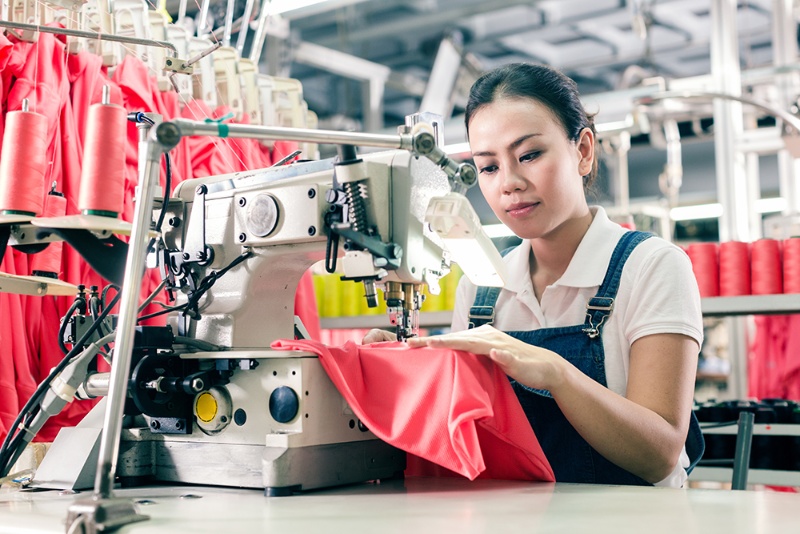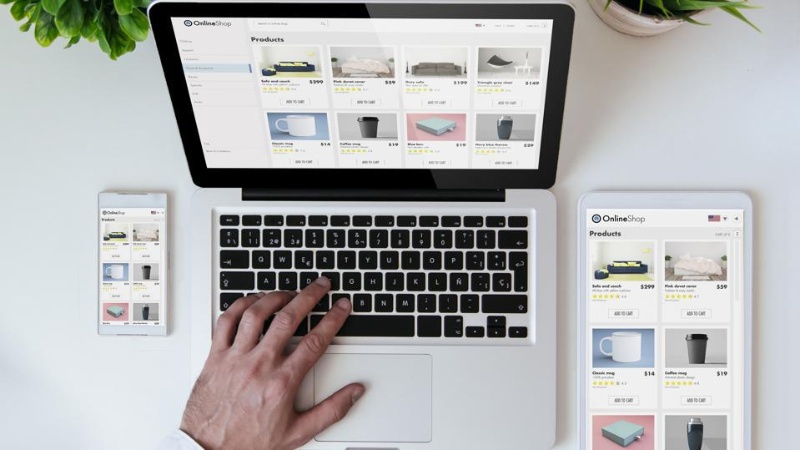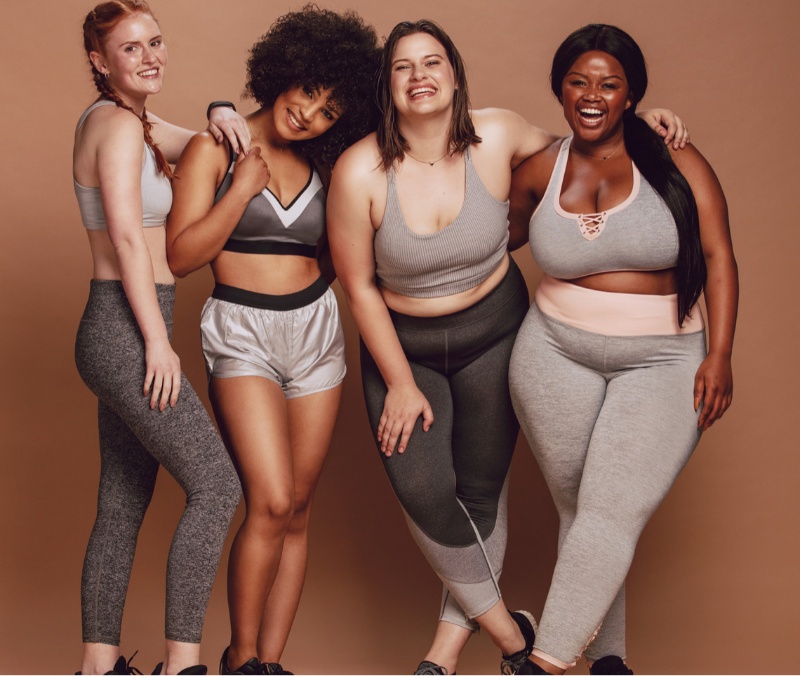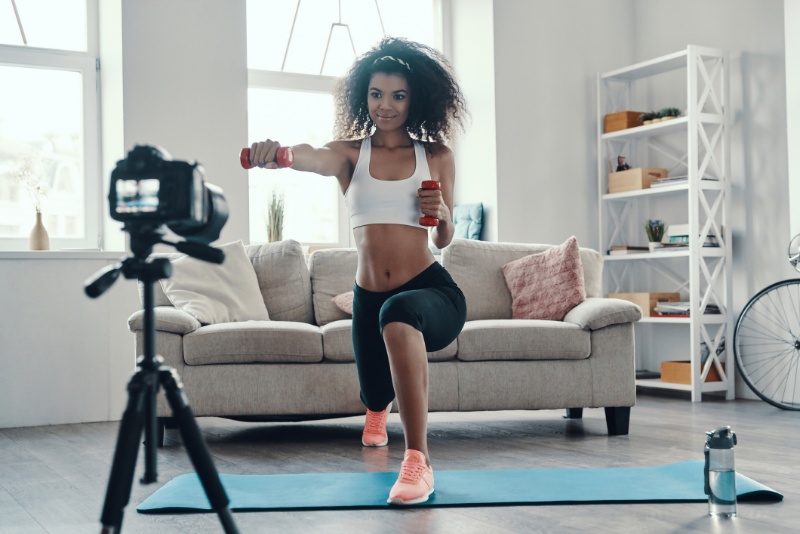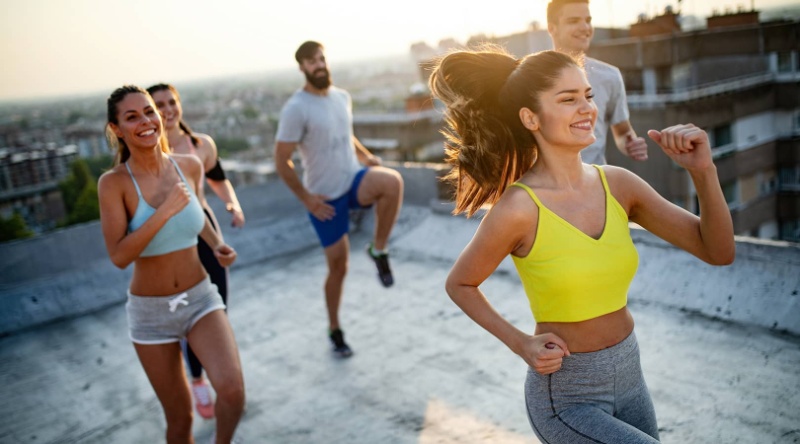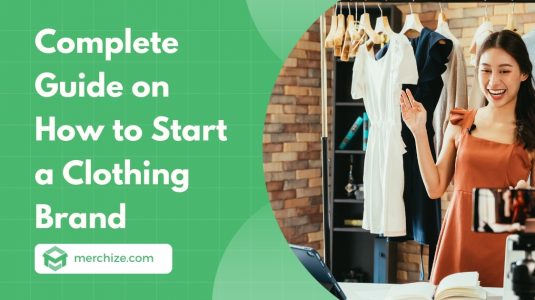Contents
Fitness apparel is a super lucrative market that has seen consistent growth over the years. This market is about to reach $202 billion by 2026. In this article, let’s explore how to start a fitness clothing line in 2023.
The fitness clothing industry owns huge potential to grow in the future. Still, this market is mostly overshadowed by a few big players like Nike or Addidas. If you want to gain a bite in this market, you must try different approaches and find a specific niche.
In this matter, print on demand model can help you to find the highly-potential product-market fit for your business.
In the following, we will guide you through each step that will help you successfully launch your fitness clothing line.
Step 1: Conduct industry research
Whenever you are starting a new business, the first thing you need to do is to look around to see how the market is doing, find out who is thriving, what is oversaturated and what is the gap that you can squeeze into. In short, you must do industry/market research first.
Market research might sound a bit daunting and complicated at first, but it all boils down to these big questions:
- What is the size and potential demand of the market?
- Who are the main competitors and what are their strengths?
- What are the market trends and customer preferences?
- What are the risks and barriers to entering the market?
To save you some time for the market research process, we will give you answers to each question.
Question: What is the size and potential demand of the fitness apparel market?
Answer: In 2022, the sports apparel industry reached $202 billion in value, illustrating a remarkable growth rate of almost 5% compared to the previous year. Looking forward, it is projected to grow 32% by the year 2028.
Question: Who are the main competitors and what are their strengths?
Answer: Fitness sportswear is a buzzing market with many segments. For each segment, there are various contenders fighting for their places.
For athletic apparel in general, we got major competitors like Nike, Addidas, Puma, Reebok, etc.
For yoga wear, Lululemon Athletica, Alo Yoga, and Beyond Yoga are some forces to concern.
The athletic footwear market sees competition among major brands like New Balance, Nike, Addidas, Asics, etc.
Of course, depending on your target niches, you will be able to narrow down your competitor list to watch out for.
Question: What are the market trends and customer preferences?
Answer: Researching new trends allows you to explore new potentials and untapped markets. Here are a few prominent trends that are about to explode in the athletic apparel industry.
- Yoga wear: The increasing popularity of yoga across the population has bred a whole industry dedicated to yoga attire. Yoga apparel is not a new phenomenon in the market. However, there is no doubt that this niche is going to surpass itself and become more and more relevant with new opportunities for businesses to explore.
- Green and eco-friendly fitness apparel: Eco-friendly and green apparel is the future of the apparel market. The sustainable apparel industry is currently worth around $6.5 billion and is expected to reach $10.1 billion by 2025. Undoubtedly, this trend will also affect the trajectory of the athletic fashion market.
- Size inclusivity: Driven by the positive message about body images, the demand for size-inclusive fashion products continues to grow. By offering a variety of sizes from petite to plus-size, your brand will be able to reach a large group of customers.
- Athleisure wear: Athletic apparel is no longer limited to sports and workout use. Now, it has become a main staple in fashion consumerism.
Question: What are the risks and barriers to entering the market?
Answer: The biggest challenge of the fitness apparel market is the tough competition from well-established brands. In order to stand out, you must narrow your focus and aim at a specific niche.
Another distinctive feature of the fitness apparel market is the high requirement for material quality which will drive the product costs significantly. It proposes a constant challenge of how to balance quality and cost for every business in this space.
Other than this, depending on the niches you are targeting, there will be different challenges that are specific to that niche.
Step 2: Carve out your niche
After looking at the market as a whole and make in-depth research, you have gained broad ideas of which direction your business should navigate toward.
At this stage, you will need to dive deeper and identify a gap in the market that you can fit in.
- Who are your target customers?
- What market segment do you want to focus on?
- What is your business model?
- What kind of products do you want to sell?
- What should be the price points for your products?
By answering these questions, you will be able to create a clear vision for your business.
Step 3: Create a solid business plan/strategy
After identifying the opportunities and target market, your next step is to lay out a detailed plan that will guide your new business to achieve your goals.
A business plan should comprise the following factors:
- Operational plan and timeline: Figure out the step-by-step process that your business will follow.
- Marketing and sales strategy: Marketing and sales are integral parts of a business. For this matter, you will need to think about how you can approach and draw customers.
- Financial plan: Finance is a tough nut to crack. However, having a well-thought-out financial plan is a great way to secure your business and your money from the get-go. You need to estimate the start-up costs as well as how you can fund the money to sustain the business as well as what you can do to cut down the costs.
- Risk management: Kicking up a new business is not easy. To better prepare for the upcoming challenges, you must identify and assess all the potential risks as well as decide what actions should be taken if it happens.
- Key results: To make sure that your business is not heading in the right direction and at the right speed, it is important to set out specific goals you want to achieve and how to measure each goal with specific metrics.
- Partnership: Most newly-launched businesses aren’t fully equipped with all the resources that are required to maintain their growth. That’s why establishing a partnership will help you go a long way.
Step 4: Obtain licenses and permits
To make your business a legit entity, you will have to go through the process of acquiring all the required licenses and permits.
Paperwork can be overwhelming. Even so, you shouldn’t delay or take it lightly.
The specific process of obtaining the license and permits for your business would vary depending on what state and city you’re located in. But in general, you would have to collect the following licenses and permits:
- Doing Business As (DBA)
- Health licenses and permits provided by Occupational Safety and Health Administration (OSHA)
- Other licenses and permits related to trademarks, patterns, copyrights, or other Intellectual property.
In addition, you might require licenses and permits at both the state and local levels, including those specific to counties or cities. The specific requirements and procedures for obtaining these licenses can differ, so it’s advisable to visit the official websites of your state, city, and county governments or get in touch with the appropriate authorities for further information.
Step 5: Find products
The athletic apparel industry is highly diverse with various products. Depending on the niches you are targeting, you can select the most relatable products. Here are some product ideas for your fitness apparel business:
1. Women’s Activewear
Modern women have become increasingly interested in participating in sports and fitness activities. As a result, the demand for women’s activewear also skyrockets.
With women’s activewear, you might take a different approach when it comes to choosing the right products. For example, women pay more attention to the designs, colors, and styles of the products. Women also tend to have specific requirements regarding fit, coverage, and support for their fitness garments.
- Legging and Yoga pants
- Sports Bras
- Tank tops and t-shirts
- Hoodies and jackets
- Shorts
2. Niche Sportswear
Instead of going for the broad category of fitness clothing, it would be much easier to penetrate into the market with niche products. It also makes it easier for your marketing strategy to identify, target, and promote the products to the right customers.
At Merchize, we have introduced many lines of sportswear products for specific sports niches.
- Polo: AOP Polo Shirts, AOP Women’s Polo Shirt, AOP Women’s Sleeveless Polo Shirt, AOP Long Sleeve Polo Shirt
- Baseball: All-over Print Baseball Jersey, AOP Baseball Jacket, Crop Top Baseball Jersey
- Watersports: All-over Print Long Sleeve Rash Guard, AOP Short-sleeve Rash Guard
- Football: All-over print Football Jersey
3. Personalized Sportswear
When thinking about sportswear, we usually imagine the sort of neutral, minimalist, streamlined design. There aren’t many options for personalization available in the mass market. However, it also means huge untapped potential for unique, personalized sportswear.
Noticeably, currently, we have market-leading brands like Nike and Addidas has started offering many personalization options for their customers. But you don’t have to be such a powerhouse to be able to make personalized athletic clothing.
With print-on-demand, it is much easier to offer personalized products as it requires a minimum order quantity of only one. That’s not all. Print-on-demand also provides a wide range of options for you to choose from.
4. Fitness accessories
Besides the main staple of clothing items, fitness accessories are also one lucrative category in the fitness apparel industry. Consider including a range of accessories that customers can use alongside their activewear:
- Tumblers
- Gym bags
- Yoga mats
- Hats, socks
5. Activewear sets
Delivering your fitness products in coordinated sets can help you to diversify your catalog, create more upsell opportunities and max out the profits.
Here are some suggestions for pairing your activewear sets with the products available at Merchize:
- All-over Print Unisex Baseball Jersey/All-over Print V-neck Short Sleeve Jersey/ Unisex Tank Top + All-over Print Jersey Shorts
- All-over Print Football Jersey + All-over Print Jersey Shorts
- All-over Print Polo Shirt (Lightweight) + All-over Print bove-knee Sports Shorts
- All-over Print Women’s Tank Top/All-over Print Women’s Sleeveless Polo Shirt/Ladies’ Tank Top + All-over Print Legging
- All-over Print V-neck Short Sleeve Jersey + All-over Print Sweatpants
- All-over print Short-sleeve Rash Guard/All-over Print Long Sleeve Rash Guard + All-over Print Above Knee Sport Shorts
Step 6: Choose your manufacturer
Selecting manufacturers is one of the most important steps in starting a fitness apparel business. A reliable manufacturer will make it easy to maintain and grow your business.
Yet, it is not easy to trace down a qualified manufacturer that can meet your standards and delivers what you need. In most cases, finding the right manufacturer is an ongoing process that you will have to go over time and time again.
For a fitness apparel business, there are a few factors that you need to take into consideration:
Product Quality
Product quality should come first in your list of criteria for seeking manufacturers. To examine the product quality of a manufacturer, you can look into the quality of materials, from the fabric to smaller details like stitches, buttons, and zippers.
Besides the materials, sewing quality is also an aspect that reflects the level of craftsmanship and quality control of a manufacturer.
- What types of stitching are used for different garment parts?
- Is the stitch consistent and neat?
- How strong is the seam?
- Are there any loose threads, skipped stitches, or irregularities in the final products?
Especially for athletic apparel, the requirements and standards for stitching should be up there. Or else, it won’t be able to endure all the stretching and movement during the heavy exercises and workouts.
Facility and technology
To keep up with the growing competition, it is important to feature the latest production technology.
On the marketing front, it is super helpful to impress and build trust with customers using terms and names related to the newest technology. And from the production perspective, modern facilities and technology can easily translate into higher quality and effectiveness, and sometimes, reduced cost.
And as your business grows, your order quantity also increases. To ensure a smooth supply chain, your selected manufacturer must be able to keep up with the increasing demand and meet the deadlines, all of which would be impossible without a reliable and large facility.
Pricing
Pricing is also a major concerning factor that shouldn’t be overlooked. In the end, your bottom line is what makes or breaks your business. If you are able to resource a manufacturer with reasonable prices and attractive offers, you will be able to broaden your profit margin and offer competitive prices to your customers.
Minimum quantity
Last but not least, minimum quantity is highly important, especially for a new business. For starters, you will be continuously testing and doing guesswork about how many products you are able to sell.
It is important to test the water before going on full blow to a product. That’s why you want to have as make a fulfillment order as small as possible.
Step 5: Set up your shop
To distribute your products to the hands of customers, you will need to establish a storefront, either offline or online.
- Offline – Traditional offline stores for your fitness business will help you to interact with customers in real life and offer them opportunities to try on your products. However, setting up an offline store will take up a huge part of your budget, which is a risky move for a beginner.
- Online – Establishing an online store is much simpler and more affordable than brick and mortar store. For an online store, you can make up for the lack of real-life experience with detailed photographs and videos on the web.
There are various channels for you to establish your online fitness apparel storefront.
- Owned website: Having an owned website on your own domain is a highly advisable option – This option allows you to establish strong branding as well as have full control over the expansion of your business in the long run.
- Other e-commerce websites: E-commerce marketplaces like Amazon, Etsy, eBay will add more touch points to your business and increase your brand’s presence in the online space. Your fledgling business can benefit from the huge number of existing customers on these platforms.
It is best if you are able to maintain two of the mentioned types of online sales channels. However, if you only have enough resources to maintain one option, you can start with the second option, then add owned website later on whenever you’re ready.
Step 7: Start building your brand
After laying out the foundation for your fitness clothing line, it’s about time to polish your presence and increase the appeal of your business by building your brand.
For the most part, you will have to follow the traditional branding strategy, for example, identifying brand identity, creating a brand logo, brand name, brand visual, developing brand messages, building online brand presence, and so on. However, there will be some unique characteristics to establishing fitness apparel that you should be aware of:
Emphasis on functionality and performance
When it comes to promoting fitness apparel products, functionality, and performance are what customers care most about. Your branding attempt should also focus on these aspects of your products.
Corporate messages about healthy lifestyle
A common characteristic of fitness product consumers is the shared interest in an active and healthy lifestyle. In the end, health is the goal for everyone who goes down this route of workout and exercise.
In order to get closer to your customers, your brand also needs to represent this lifestyle. Creating and sharing content like blogs, podcasts, and videos that encourages healthy lifestyles is a great way to help your brand connect and stay relevant to your target audience.
Embrace body positivity and size inclusivity
The powerful movement of body positivity and size inclusivity has sent ripples of impact throughout the entire apparel industry, and fitness apparel is surely at the forefront of this transformative shift.
Along with the real attempt to translate these empowering messages into your products, you also need to integrate them into your marketing campaigns as well. Not only it helps your business to resonate with the target customers also helps to deliver meaningful products to the world.
Collaborating with fitness influencers
Fitness influencers have a huge impact on the fitness community and culture. Having shoutouts from these influencers is the shortcut for your brand to gain recognition and reach out to the target audience.
You can partner with influencers partner with fitness influencers, athletes, or fitness enthusiasts to create collaborated content like product reviews, testimonials, social media shoutouts, and campaigns.
Depending on your budget, target audience, values, and messages, you can search for influencers who can help to grow your brand.
Start and grow a fitness community
The sense of community is strong in the world of fitness. It would be a miss if you overlook the power of the growing fitness community. Lululemon is a great example of how community building can help leverage the branding effort to the next level.
A large part of Lululemon’s marketing effort focuses on actively engaging with its customers through various initiatives, such as in-store events, yoga classes, running clubs, and community meetups.
One of their notable campaigns is the “Sweat With Us” where they host free yoga classes at Lululemon stores. Lululemon cranks up the excitement with their epic “SweatLife Festival." This annual event brings together over 6,000 attendees for a weekend that’s bursting with learning, sweating, and inspiring moments.
These attempts have contributed to establishing Lululemon as a leading yoga apparel brand with a dedicated following.
Conclusion
As you delve into each step, from conducting thorough industry research to setting up your shop and building your brand, remember that authenticity is your strongest asset. Carve out your unique niche, let your products embody quality and functionality, and weave in the empowering threads of body positivity and size inclusivity. By embracing these principles and fostering connections with fitness influencers and communities, you’re not just creating activewear, but a movement that celebrates health, vitality, and the joy of self-expression. Your fitness apparel line isn’t just clothing; it’s a statement, a lifestyle, and a source of inspiration for all who aspire to live their best, most active lives
